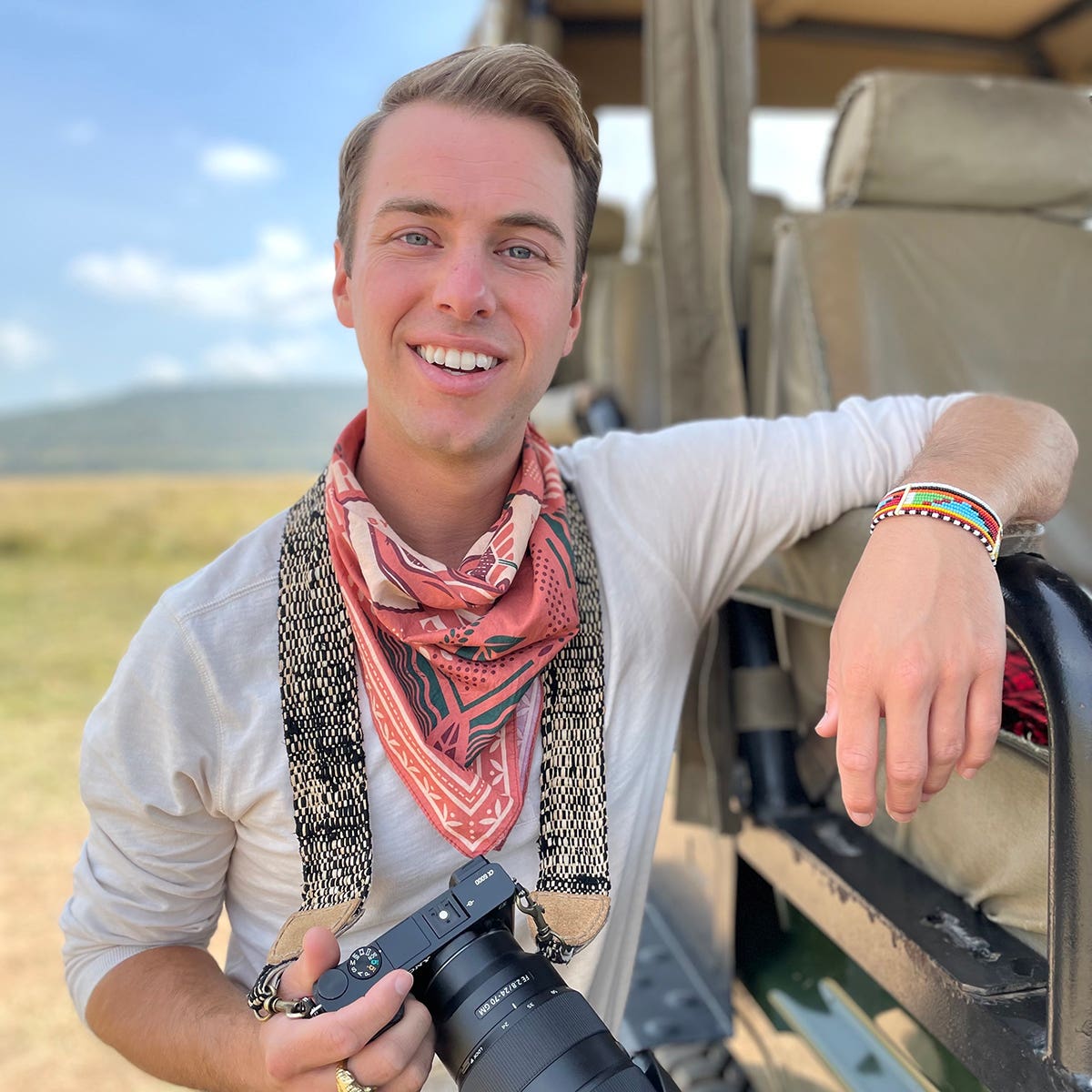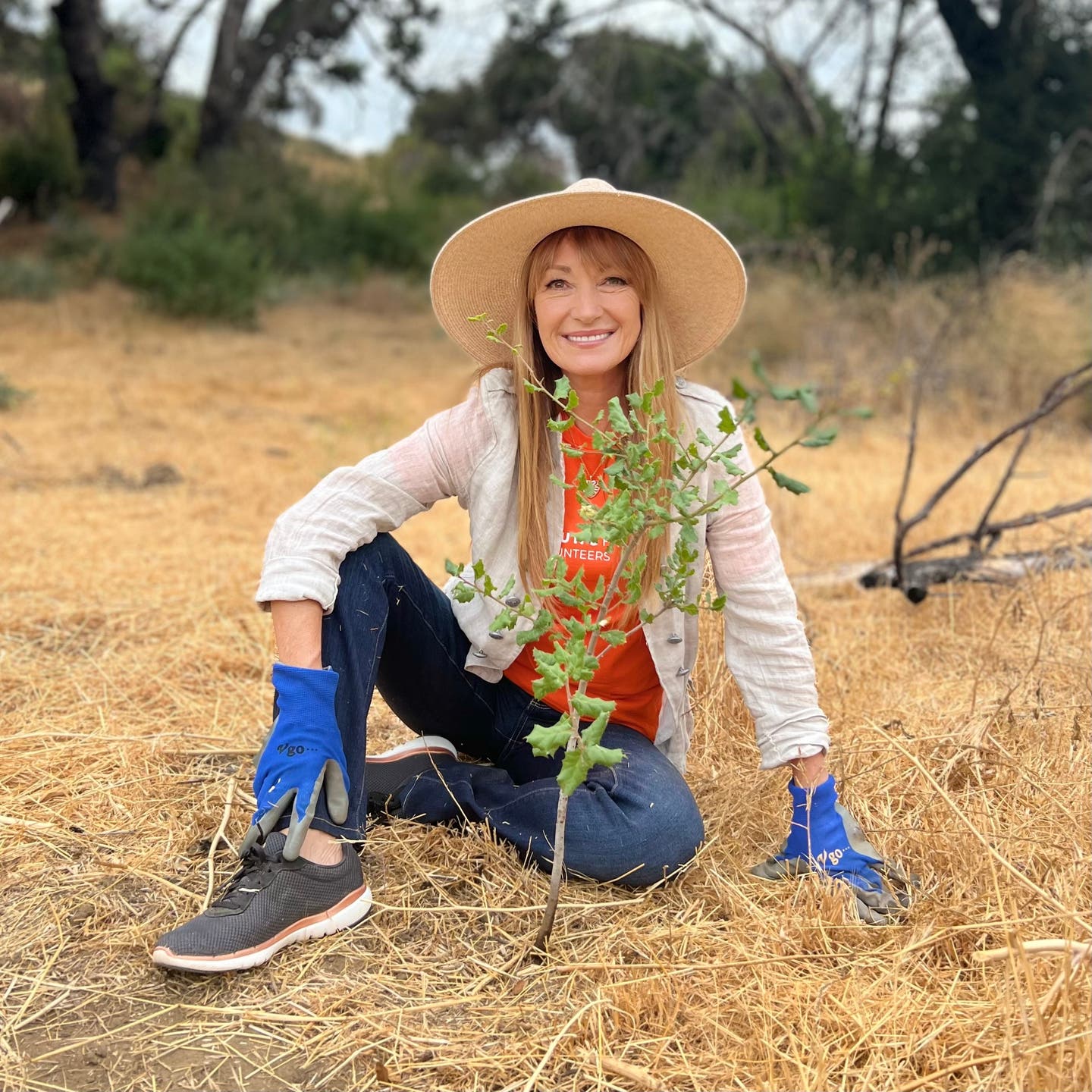Award-winning actress and philanthropist Jane Seymour on Saturday, July 30, planted the oak tree that marks the halfway point in a critical restoration project in Santa Monica Mountains National Recreation Area (SMMNRA). The Open Hearts Foundation, co-founded by Seymour, has supported this project on multiple occasions with the help of nearly 150 individual volunteers. This rewilding effort will be the largest restoration project in SMMNRA. Volunteers are doing most of the work, dedicating just a few hours of their time to help the National Park Service rewild a park hard-hit by fires in recent years.
“Reaching our halfway point is a celebration we share with the over 2,000 volunteers that have supported these massive rewilding efforts,” says Joseph Algiers Jr., a restoration ecologist with the National Park Service. “I've been blown away by the power of volunteers for this project. These dedicated folks truly appreciate the urgency of the work we're doing to protect the Santa Monica Mountains and contribute to a healthy planet overall.”
The Santa Monica Mountains are a part of an extraordinary biodiversity hotspot called the California Floristic Province. This coastal region--with its hot, dry summers and cool, wet winters--provides an ideal habitat for numerous plant and animal species to thrive, many found nowhere else in the world. Restoring this ecosystem isn’t as easy as throwing seeds and hoping they grow, however. National Park Service staff and volunteers first prepare the land by mowing the area and using augers to drill the holes, then they carefully transplant seedlings, ensuring they are protected from the weather and hungry herbivores. This is all followed by plenty of watering and weeding to encourage healthy growth.
Despite the establishment of the national recreation area in the 1970s, the region remains threatened by massive fires that continue to grow in intensity due to climate change. Within five years of each other, two fires scorched this mountain range, the Springs fire in 2013 (24,238 acres) and the Woolsey fire in 2018 (over 21,000 acres of National Park Service land). These flames changed the Santa Monica Mountains on an unprecedented scale. The 50,000th planting is part of efforts to restore the areas scorched by the devastating wildfires. Over time these restoration efforts will improve soil health, limit the extent of future wildfires, bolster climate resilience, and establish habitats to attract more native wildlife to the region.
For thousands of years and still to this day, the Santa Monica Mountains sustained the Chumash and Tongva/Gabrielino Indigenous cultures. Sycamore Canyon, which cuts through Santa Monica Mountains National Recreation Area, was part of a Chumash trade route. To reflect this heritage, the National Park Service in partnership with the Friends of Satwiwa established the Satwiwa Native American Indian Culture Center and Natural Area located at Rancho Sierra Vista, one of the key restoration sites supported by the Re:wild and Snap Inc partnership.
“I think it’s important to understand that the Santa Monica Mountains consist of land that was violently removed from many Indigenous peoples across the region,” says Olivia Parra, biological technician with the National Park Service. “We need to go into these spaces with respect and humility that we have access to places that other people who are ancestrally connected may not have the same access to. We must appreciate that these ecosystems developed alongside Indigenous peoples."

Milo Putnam
Communications Manager
Milo is a communications manager for Re:wild and has a true love of storytelling and creating compelling content that mobilizes action for our planet. He’s always looking to uncover the next best story to engage others in discovering the natural world and helping to protect it in the process. When he’s not crafting engaging content, Milo loves going on adventures near and far with his husband.



